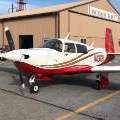Mooney Tail vs V Tail
-
Members Online
- Stephane Blard
- Johnny U
- EricShr
- MDMooney
- MikeOH
- Mark89114
- AnimalFlyer
- Fly Boomer
- wrr
- TCC
- Joe Linnebur
- Jake@BevanAviation
- flyfast
- SKI
- cliffy
- dvk
- Paul Thomas
- AviH
- Mikey30V
- LOCOLJ
- Adam Belle
- KASE
- N201MKTurbo
- varlajo
- 1980Mooney
- haymak3r
- Lincoln
- rahill
- shawnd
- raymondscott0321
- skykrawler
- generalaviationguru
- Lumberg
- UteM20F
- NickG
- hubcap
- natdm
- 1967 427
- Ibra
- AH-1 Cobra Pilot
- slowflyin
- Igor_U
- Evan
- Bolter


Recommended Posts
Join the conversation
You can post now and register later. If you have an account, sign in now to post with your account.